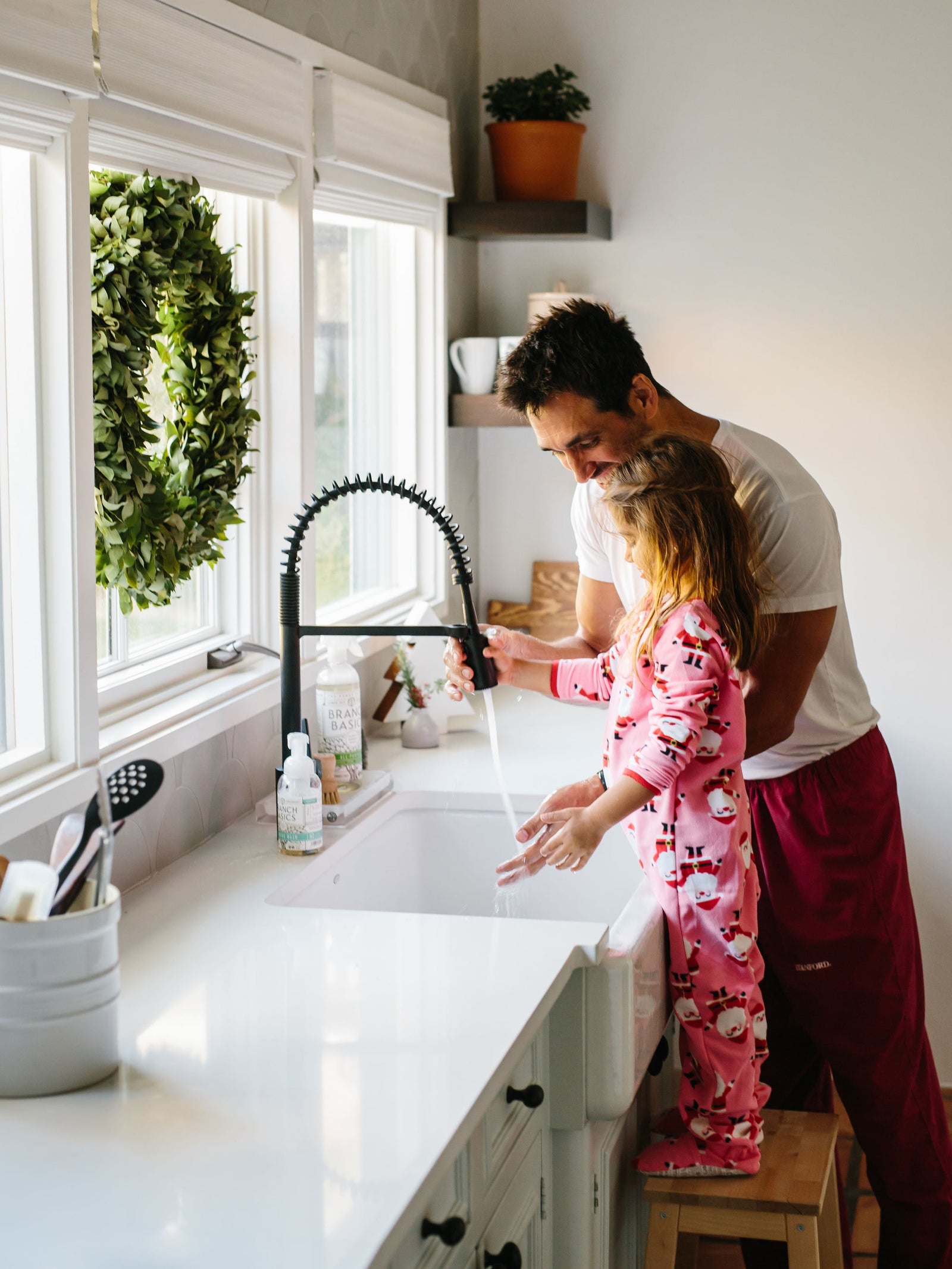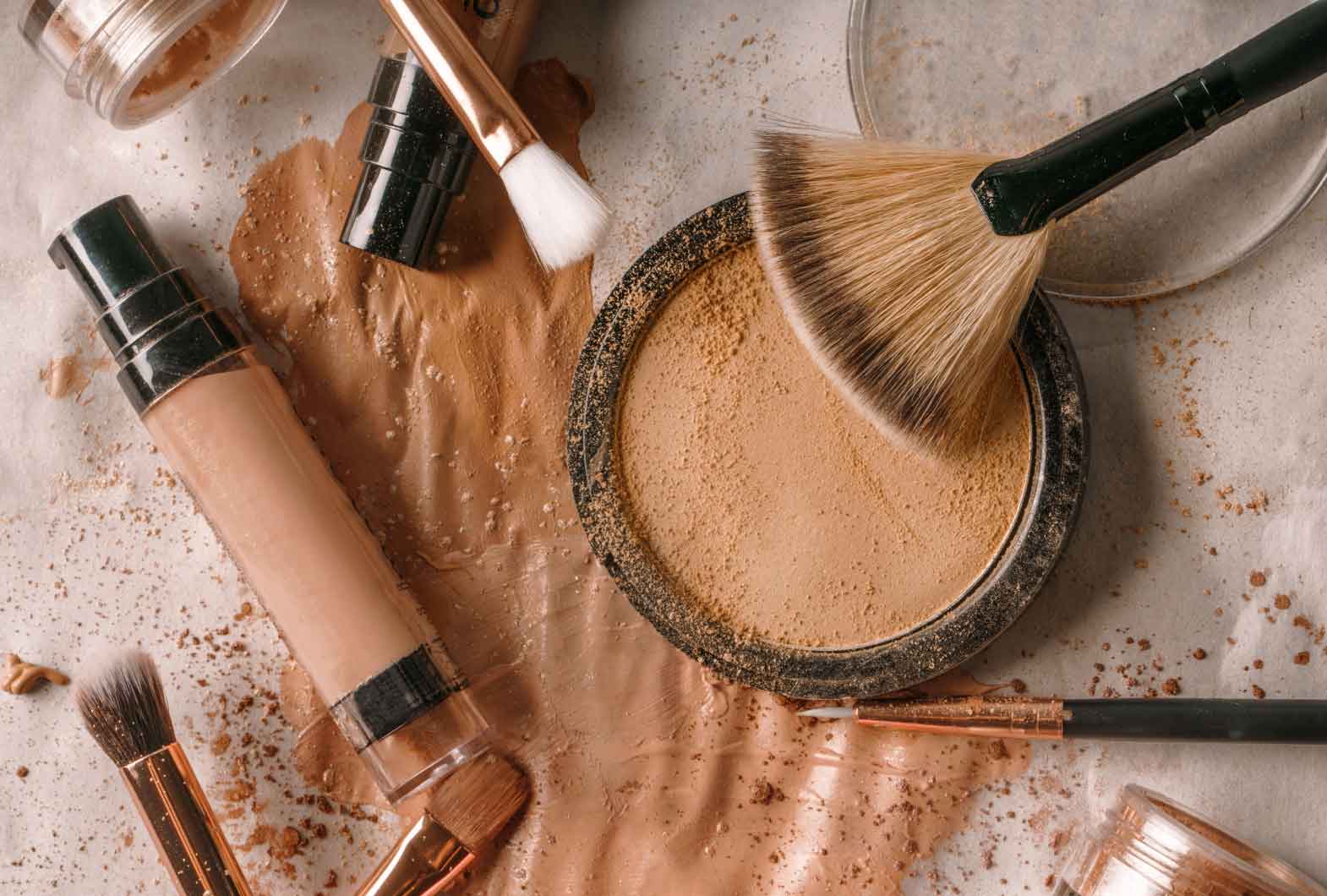Hand Soap vs. Hand Sanitizer: 4 Steps to Healthy Hands

The history of intentional handwashing had an unfortunate beginning in the 1840s.
When Ignaz Philipp Semmelweis proposed to fellow doctors that washing their hands before seeing each patient would reduce the transfer of infection, he was ignored, ridiculed, rejected, and ultimately dismissed from the hospital where he worked.
Semmelweis was infuriated and publicly denounced colleagues in the medical profession “as irresponsible murderers”.
Even his wife considered his rash behavior insane and he was committed to an asylum where he died after being severely beaten by hospital personnel.
Sadly, Semmelweis did not live to see the paradigm shift in medicine which widely accepted the fundamental necessity of handwashing in medical applications.
In fact, what happened to Semmelweis is now a term (the Semmelweis effect) that describes “reflex-like tendency to reject new evidence or new knowledge because it contradicts established norms, beliefs or paradigms”.
Long before Semmelweis, cultural and religious factors strongly influenced handwashing habits and personal hygiene. Undoubtedly, these practices inadvertently contributed to the wellbeing of participants.
The scientific realization of its importance and the understanding of the handwashing process has been a hard fought battle that continues to be clarified even today.
It is now an unrefuted fact that hand hygiene reduces the risk of the transmission of infections and is the single most important factor for infection control.
Yet this evolution of discovery finds our current culture in the midst of a new dispute about the widespread use of hand sanitizers and antimicrobial soaps by both healthcare institutions and the public.
The history of this debate clearly reveals the public’s vulnerability to schizophrenic marketing based on unsubstantiated claims of need and safety.
Handwashing In America
Using soap and water to wash hands was the predominant practice in America until the 1980s, when using a hand sanitizer was not yet on the public radar. Even in certain health care settings, this was the standard.
In 1961, the U.S. Public Health Service began recommending personnel to wash their hands with soap and water for 1–2 minutes before and after patient contact.
Rinsing hands with an antiseptic agent was believed to be less effective than handwashing with plain soap and was recommended only in emergencies or in areas where sinks were not available.
All About Triclosan
A new era dawned when the antibacterial ingredient, triclosan, was unleashed as an EPA registered pesticide in 1969. By 1972, it was used as a hospital scrub and handwash to prevent bacterial infections.
Triclosan was also approved by the FDA for use in dentifrices and medical devices as well as for use in several antimicrobial applications under the authority of the EPA.
The government assured the public that “the safety of triclosan has been established through extensive testing including clinical studies. A margin of safety greater than 1,000 has been calculated for Triclosan based on its use in personal care products.”
Government sanction was followed by industry sanction.
Unilever, maker of products with triclosan, stated antibacterial ingredients “are proven to help improve personal hygiene through their use in toothpastes, mouthwashes, soaps, and deodorants. They also help to maintain clean environments via their use in household cleaning products.”
Thus, the American germicidal brainwashing and “war on germs” began.
The first national hand hygiene guidelines were published in the 1980s.
By 1996, the CDC/HICPAC (Center for Disease Control / Healthcare Infection Control Protection Advisory Committee) recommended that either antimicrobial soap or a waterless antiseptic agent be used in hospital settings.
During this time the inclusion of antibacterials increased in consumer products and questions of concern arose about the potential overuse of antibacterial agents.
In January 1997, the FDA convened an independent expert panel to determine if antimicrobial products presented any risk of promoting antibiotic resistance.
The FDA’s Non-prescription Drug Advisory Committee (NDAC) concluded and assured the public that there was no evidence linking the use of antimicrobial products and antibiotic resistance under actual use conditions.
The public bought the need for antimicrobial use hook, line, and sinker.
A marketplace study in 2000 by Eli Perencevich, M.D. and colleagues found that over a billion dollars were being spent on these products, with more than 5,000 products registered as antimicrobial pesticides with the EPA under the Federal Insecticide, Fungicide and Rodenticide Act (FIFRA).
They found that over 75% of liquid soaps and nearly 30% of bar soaps (45% of all the soaps on the market) contained some type of antibacterial agent. Nearly half of all commercial soaps contained triclosan.
Antimicrobial products contain about 275 different active ingredients.
Voices of reason continued to speak out.
In March of 2000, Purdue University professor Barbara Almanza wrote an article from Purdue News titled – Hand Sanitizers No Substitute for Soap and Water.
Almanza, who teaches sanitation practices for food service personnel, institutional and tourism management, stated that although waterless hand sanitizers are marketed as an alternative to soap and water, “research shows that they do not significantly reduce the overall amount of bacteria on the hands, and in some cases they may even increase it”.
Almanza went on to say that while hand sanitizers are safe supplements to handwashing in food prep, they may not replace handwashing.
Therefore, “people should not use hand sanitizers in place of a good lathering with soap and water if it’s available.”
Still, handrubbing sanitizers continued to gain favor, whereas handwashing was only reserved for selected contexts.
The introduction of “handrubs/hand sanitizers” revolutionized hand hygiene practices and became the standard of care. They saved time and there was no need for water.
Americans became particularly infatuated with hand sanitation for children.
Parents packed hand sanitizers into bookbags, and schools purchased hand sanitizers for each classroom and school bathroom.
In some schools, children line up to have their hands sprayed several times a day with a hand sanitizer.
Today in 2018 and for the past few years schools list hand sanitizers as part of their school supply list.
Find out what’s on the Branch Basics-Approved School Supply List.
What’s So Wrong With Using Antibacterial Agents?
This widespread, needless overuse by the public is undermining our immune systems and is helping create new resistant strains of bacteria in hospitals at an unprecedented pace.
Starting in 2002, triclosan was detected in human breast milk and in blood samples.
Triclosan tends to bioaccumulate or become more concentrated in the fatty tissues of humans and other animals, which is linked to use of body care products containing the ingredient.
CDC research on a broad cross-section of the population detected triclosan in the urine of 75% of 2,517 Americans. Higher levels of triclosan were typically found in higher income participants.
An earlier study spearheaded by the Mount Sinai School of Medicine found triclosan in the urine of 61% of 90 girls age 6 to 8.
Lab studies link triclosan to cancer, developmental defects, and liver and inhalation toxicity, and it is suspected to be a hormone and thyroid disruptor.
Today, triclosan ranks in the list of top contaminants of concern worldwide.
Studies in 2013 and 2014 comparing the use of hand sanitizers versus soap in institutions as well as in schools have been revealing.
In 2013, a study published in the American Journal of Infection Control reviewed handwashing versus hand sanitizer practice by the staff in 91 long-term care facilities.
Those facilities who relied more on hand sanitizers rather than handwashing reported more outbreaks of norovirus-related illness.
In fact, where the staff was equally or more likely to use the hand sanitizers over soap and water for routine hand hygiene, the chance of an outbreak was nearly six times greater.
Studies have also shown that hand sanitizers do not kill Clostridium difficile (C. difficile) which, as of 2014, rivals MRSA as the most common organism to cause health-care associated infections (HCA).
Furthermore, the CDC states that soap and water are more effective than hand sanitizers at removing or inactivating certain kinds of germs such as Cryptosporidium, norovirus, and Clostridium difficile.
In August 2014, USA Today stated that studies are showing the use of hand sanitizer is not reducing absentee rates in schools.
What's The Solution?
The CDC (Center for Disease Control) is now recommending using just pure soap and water instead of hand sanitizers for handwashing for employees or children in a school.
They state that this is especially important for children and their developing immune system.
The CDC also states that if soap and water or a cleaner with surfactants like Branch Basics are not available, using an alcohol-based hand sanitizer that contains at least 62% alcohol is appropriate.
Using products with alcohol such as ethyl alcohol (which is the same alcohol that is in wine, beer and liquor) has been proven to not cause this superbug issue.
Alcohol acts in a completely different manner than a pesticide and kills germs through a mechanical action within seconds by physically destroying the cell membrane and there is no mechanism by which the germs can become resistant to it.
For certain germs such as norovirus, the CDC says that washing hands with soap and water is your best prevention, especially after using the bathroom, changing a diaper, and before eating and doing food prep.
Sanitizers may help, but “they are not a substitute for washing with soap and water.” In addition,
“to date, studies have shown that there is no added health benefit for consumers using soaps containing antibacterial ingredients compared with using plain soap.”
In December 2013, the FDA (Food and Drug Administration) announced a bold new position on antibacterial soap: manufacturers have to show that it’s both safe and more effective than simply washing with conventional soap and water, or they have to take it off the shelves in the next few years.
After more than 40 years of study, the FDA is now saying that it has found no evidence that common anti-bacterial soaps prevent the spread of germs.
Scientists at the FDA announced that they are revisiting the safety of triclosan and other sanitizing agents found in soap in countless kitchens and bathrooms.
There is concern that triclosan and other antibacterials can interfere with hormone levels in lab animals and spur the growth of drug-resistant bacteria.
The government’s preliminary ruling lends new support to independent researchers who have long argued that the chemicals are, at best, ineffective and, at worst, a threat to public health.
In 2016 the FDA banned triclosan and 17 other chemicals used in hand and body washes in consumer products. In December 2017 the FDA banned triclosan in hospital settings.
Consumer Confusion About Hand Soap & Hand Sanitizer
Is it any wonder that we are a bunch of confused consumers? What is the truth here?
Unfortunately, the unintended consequence of the overuse of antimicrobials in both hospitals and by the public has resulted in an urgent, scientifically-based, worldwide call to action to reduce exposure to sanitizers and disinfectants for the following reasons:
- The use of EPA registered pesticides in sanitizers and disinfectants has contributed to the increasing problem of antibiotic resistance and the creation of super microbes. This trend is causing worldwide alarm.
- The use of antibacterial products can weaken the immune system, especially of children and the elderly. Some exposure to germs is good, since that allows our immune systems to build up its own resistance.
- Everything we breathe and put on our skin actually gets into our body and goes directly to the bloodstream. The EPA registered pesticides enter the body and can cause issues such as hormonal disruption.
- Our water supplies are being contaminated with chemicals from products we use, which can impact our health.
Washing Your Hands With Soap + Water Is the Best Way to Protect Your Health
4 Steps to Healthy Hands
- Stop using antibacterial products made with EPA registered pesticides.
- Remove antibacterial soaps and cleaners with EPA registered pesticides from your home or work space.
- Wash hands with a cleaner with surfactants like Branch Basics or pure soap and water.
-
- Wet your hands with clean running water and apply Branch Basics Foaming Cleanser or Gel Hand Soap. Cold water is just as effective as warm or hot water according to study by professor at Vanderbilt.
- Rub hands together to make a lather and scrub all surfaces, making sure to clean between fingers and under fingernails.
- Continue rubbing hands for 20 seconds, or about the time it takes to sing the "ABC's" or “Happy Birthday” twice.
- Rinse hands well under running water.
- Dry your hands using a clean towel or air dryer.
-
- If soap and clean water are not available and you have an emergency, consider using a safe natural sanitizer.
-
- Apply product to the palm of one hand.
- Rub hands together.
- Rub the product over all surfaces of hands and fingers until hands are dry.
-
Healthy Hands Start with Branch Basics
If you liked this post about the hazards of antibacterial agents, we highly recommend learning why we think Fragrance is the New Secondhand Smoke.
And consider tossing antibacterial soaps and sanitizers and opt instead for a natural, human-safe product.
Branch Basics Gel Hand Soap is a safe and nourishing hand soap that promotes your health. Consciously crafted for the whole family using healthy ingredients like aloe, chamomile, and meadowfoam oil (no triclosan here!) to soothe and hydrate skin with every wash.
Our Gel Hand Soap comes in a pre-filled, refillable 16 oz bottle, is fragrance-free, human-safe, and safe for sensitive skin.
If gel isn't your jam, try our Foaming Wash (made from our all-in-one, multi-purpose Concentrate diluted with water). Our human-safe hand wash can also be used as a body wash, shaving cream, shampoo, and more! We also offer a mini Foaming Wash for on-the-go (great for sending with the kiddos to school!)
Categories

Marilee Nelson
Marilee Nelson is an Environmental Toxins expert who has spent nearly 30 years advocating for the chemically-sensitive and chronically-ill. She is a Board Certified Nutritionist, Certified Bau-Biologist and Bau-Biology Inspector and specializes in Food As Medicine. She has helped thousands of families and individuals identify, heal and recover from toxic exposures and is on a mission to revolutionize the way American families view their health.








